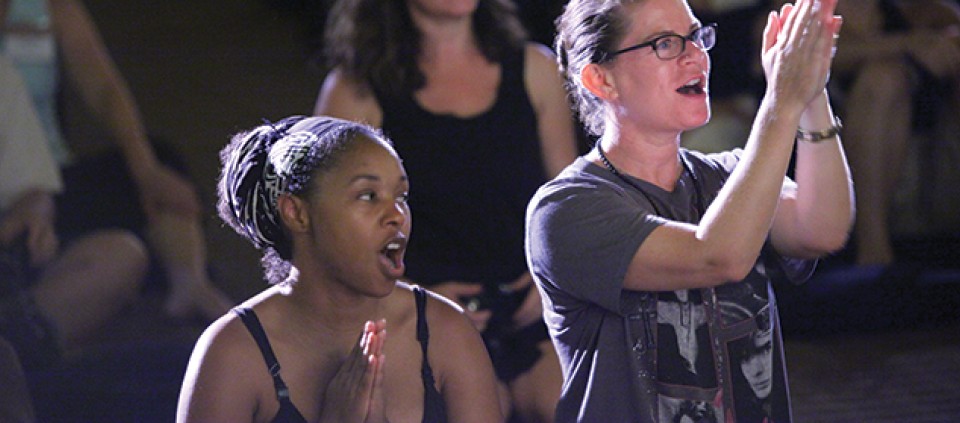The Beginners' Guide to Kirtan and Mantra

Across the country and around the world, yoga practitioners are chanting in foreign tongues, including Sanskrit, Hindi, and Gurmukhi. They’re even chanting in English. And they’re taking kirtan out of the temples and the yoga studios, and into dance halls, universities, cathedrals, and other unexpected places.
India’s ancient call-and-response form of chanting has been reinvented by modern devotional artists who are blending traditional kirtan with modern music genres such as rock, R&B, hip hop, and electronica—breathing new life (and new devotion) into yoga’s sacred chants. But what, exactly, are these chants about?
Let’s start with a basic definition of kirtan.
According to kirtan artist and bhakti yoga educator David Newman, kirtan means “to praise that which is exalted”—aka, the divine. The word “kirtan” also stems from a Sanskrit root that means “to cut through,” he says, so kirtan is also “a practice for cutting through the idea of separation, for connecting to our hearts and connecting to the moment through sound.”
World-renowned mantra music artist Deva Premal puts it this way: “In kirtan, we sing our praises to the divine in the many forms in which it manifests.” Each chant revolves around a particular mantra—what Premal defines as “a sacred sound formula that has a specific focus and energy.” These mantras often feature the names of the myriad gods and goddesses that were identified by the ancient rishis (or seers) in Vedic times, and later became central to religions such as Hinduism and Sikhism.
What exactly is a mantra? And what’s a deity?
“People say, ‘I’m singing to the Hindu deities,’ but what does that mean? What is a deity?” says Grammy-nominated kirtan wallah Krishna Das. “It's like an older, deeper, bigger being. It's a space, a presence, a feeling. These names are the names of that place inside of us that is love, pure being, pure awareness, pure joy.” Kirtan—and other forms of mantra practice, such as seated meditation—help us uncover that place inside of us, he says: “our true nature.”
The literal translation of the word “mantra,” David says, is “to guide and protect the mind.” “But you could also say, ‘to guide the consciousness away from excessive thoughts.’ Mantra helps to guide your awareness to a place that is quiet and still,” he says.
The key to success in any form of mantra practice is repetition. When you’re sitting in a kirtan, gently bring your wandering mind back to the chant over and over again. With regular, sincere practice over time, says Krishna Das, you may notice that “thoughts don’t grab you so deeply. Emotions don’t wipe you out so completely. It changes your psyche.”
“Kirtan is the glue that bonds our hearts together.”
That’s a quote from David Newman, who observes that chanting as a group brings people together as a community in a way that no other form of yoga does. “I always feel very close to the people I’m chanting with, even if I’ve never met them before,” he says. In a world filled with messages about how we’re separate from each other and separate from the divine, chanting mantras together can provide an antidote. “Kirtan was created to fuel a sense of connection and unity,” he says.
As an added benefit, it creates a sense of flow.
When you participate in kirtan, you may experience a few different stages of consciousness, says David. At first, when the kirtan leader sings a mantra and you (along with the rest of the audience), sing it back, you probably hear your own voice in relationship to the voices around you. But as time passes and you relax into the chant, you may notice your voice in harmony with everyone else’s. The third phase is the most alluring: Suddenly your perspective shifts, and it sounds as if there’s a single voice singing. You’re no longer aware of your own voice or others’; there may be 50 people in the room, but only one collective voice.
At this stage, David says, “Your sense of ‘me’ or ‘I’ can literally dissolve and you realize you’re part of the river of life—you’re not separate from it.” Some people experience this as a sense of joy and ecstasy, while others describe it as a sense of boundlessness or timelessness. “You’re just in a very spiritual, untethered, unselfconscious place,” he says. Suddenly, “no matter what’s going on in your life, you know that at a very fundamental level, everything is going to be all right.”

